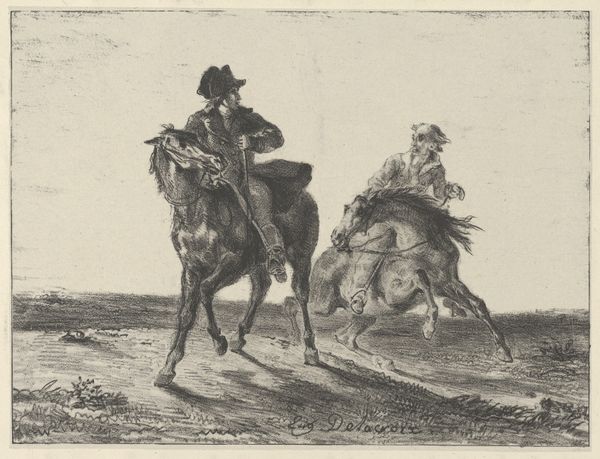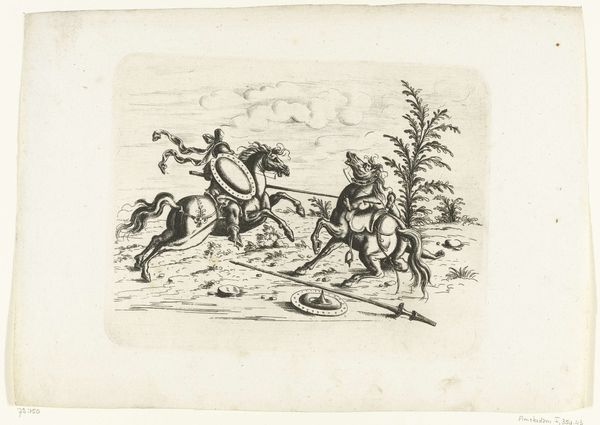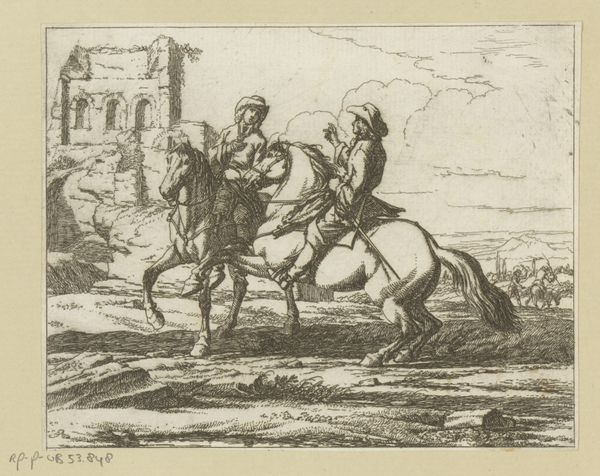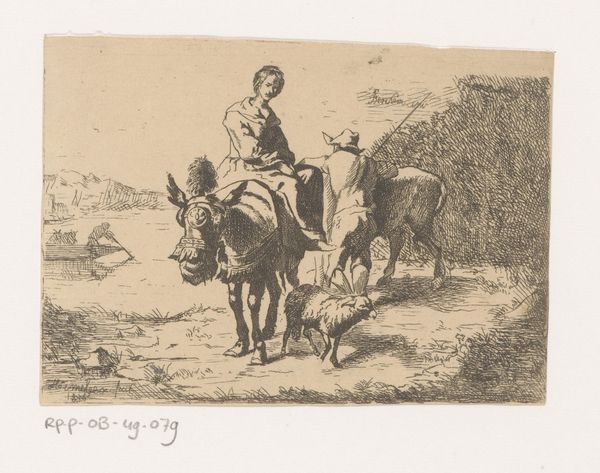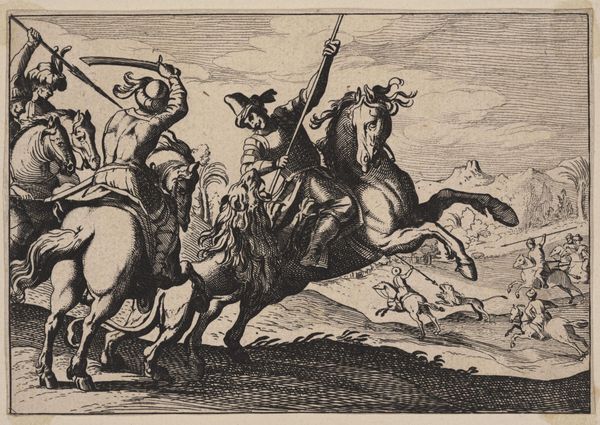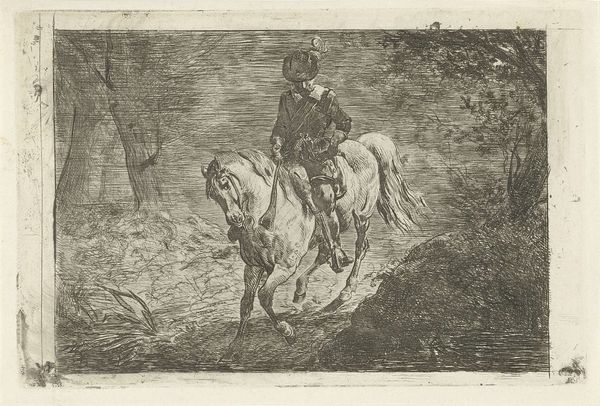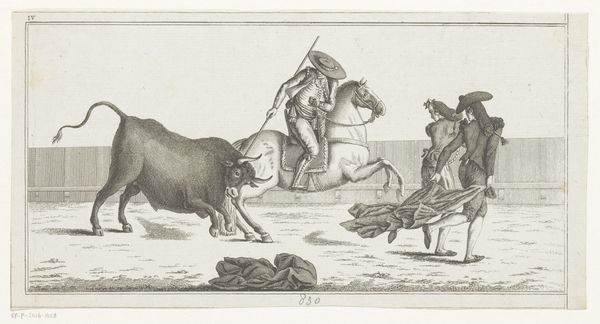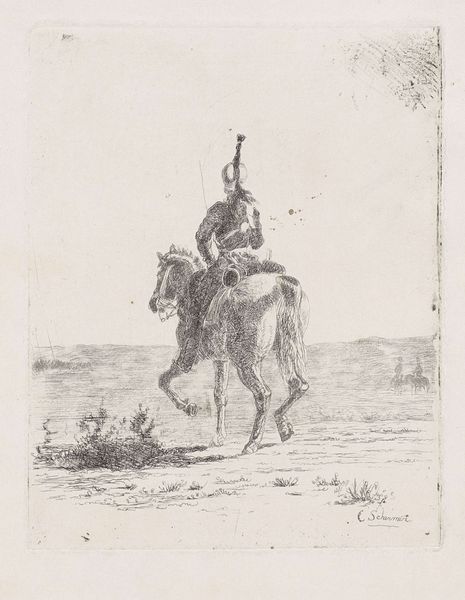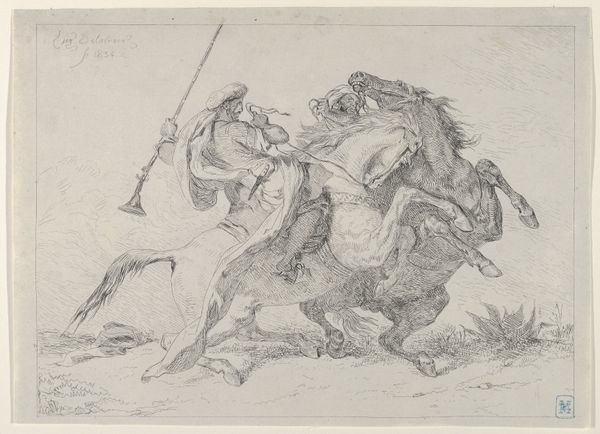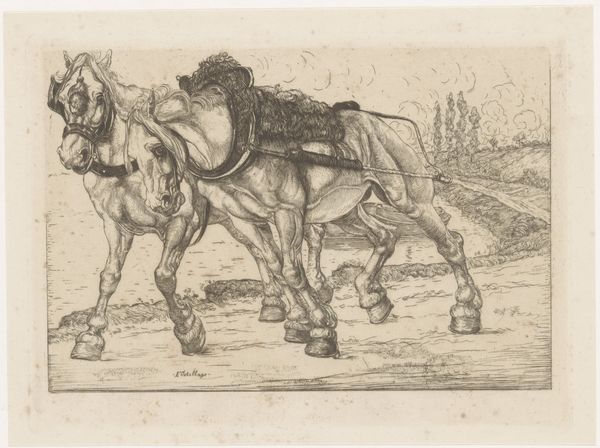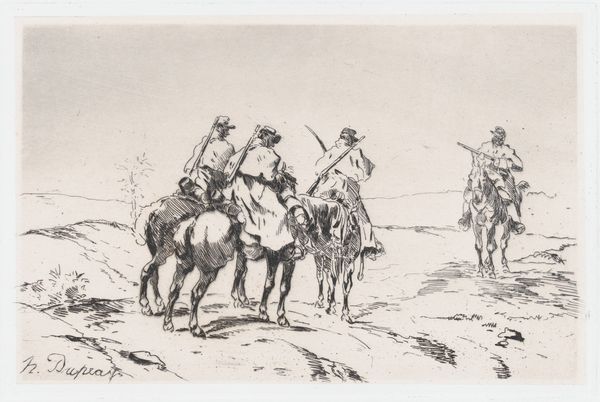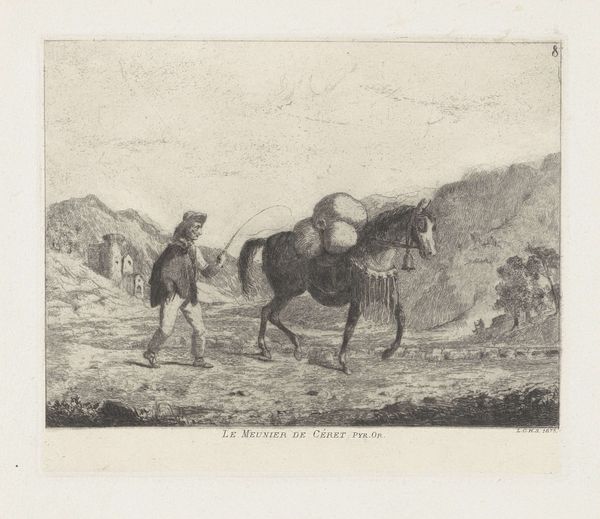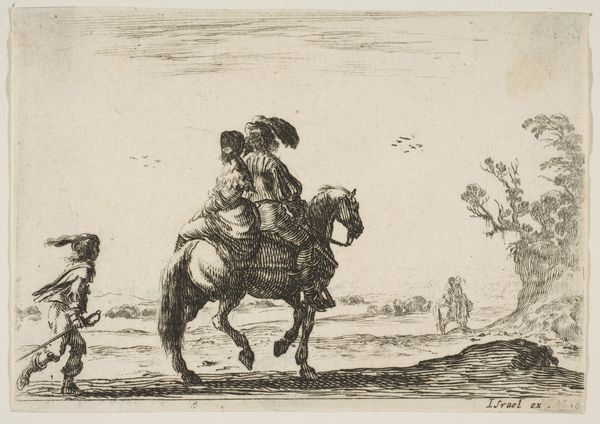
print, etching
# print
#
etching
#
landscape
#
figuration
Dimensions: Image: 155 x 343 mm Sheet: 224 x 396 mm
Copyright: National Gallery of Art: CC0 1.0
Curator: Look at how Young composes the landscape in this etching, "Navajo Rider," around 1933. There is a real focus on line and tone. Editor: Yes, my first impression is the dry, almost desolate mood it evokes, achieved through the artist's rather sparse application of ink on the plate. It speaks volumes. Curator: Absolutely. Thinking about Indigenous representation during the 1930s, one can appreciate how this work offers a glimpse into the lives of Indigenous communities of the American Southwest. The figures appear to be working, guiding livestock across the arid land. Editor: It is interesting how he uses cross-hatching to build up the shadows, giving weight to the foreground elements while the background remains much lighter, sketchier. Almost as if the plains go on forever... Curator: It’s equally crucial to note that while seemingly documenting a ‘real’ scene, the romanticization of Indigenous life was, and remains, a complicated matter. These visual narratives played a role in shaping public perception, often overshadowing the political and social challenges faced by these communities. How do we reconcile this visual story, in the grander history? Editor: Well, perhaps what the image offers is less "truth" and more a series of marks arranged just so, causing in the viewer a recognition of the subject? Like linguistic signs combining and creating meaning. Curator: Right, which leads us back to thinking about the reception of such images and the effect of that "recognition" over time. How that then translates to power. Editor: I see this technique creating an immense, unyielding sense of openness and light, which has moved my perspective to another horizon line. Thank you for your comments.
Comments
No comments
Be the first to comment and join the conversation on the ultimate creative platform.
